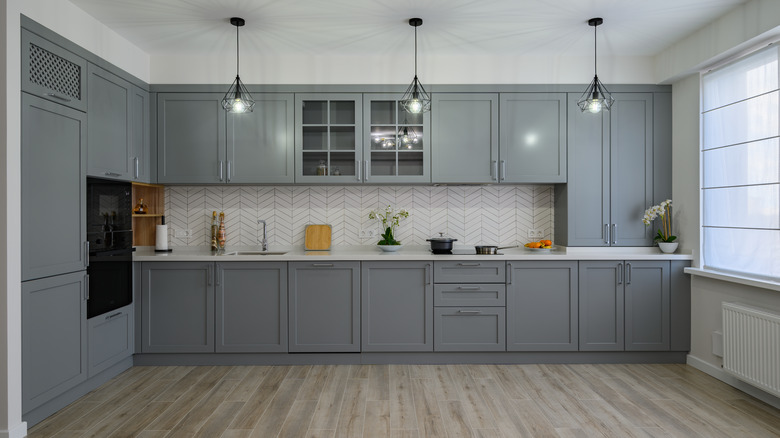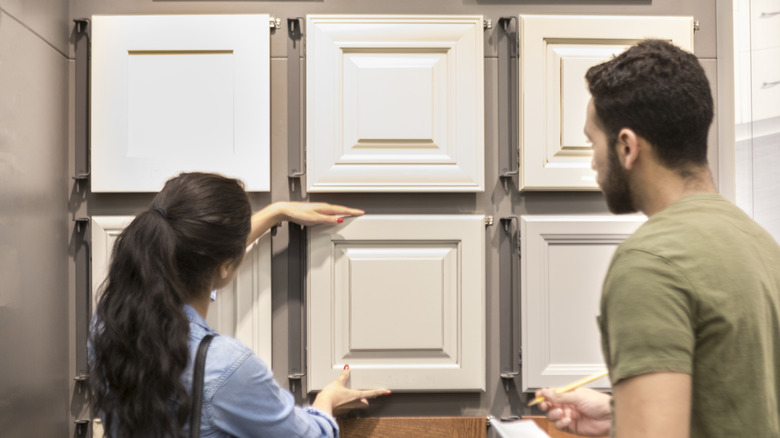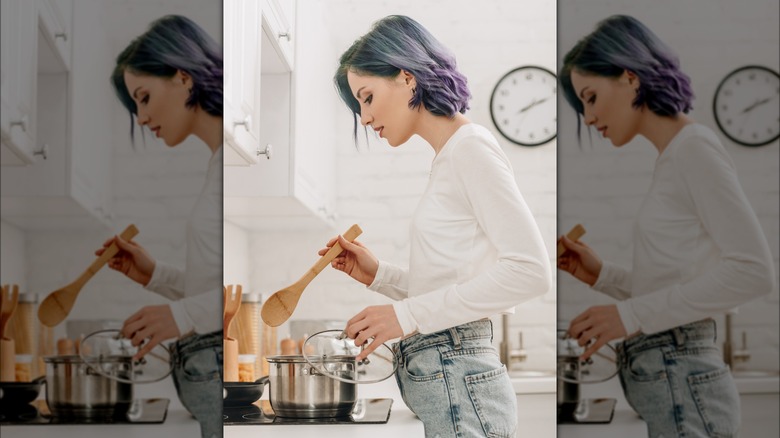The Hidden Downsides Of Putting Laminate Cabinets In Your Home
Laminate cabinets are a top choice for homeowners remodeling their kitchen or bathroom on a budget. Besides being cheaper than wooden cabinets, they can withstand high temperatures in a cooking room. Add in their durability, scratch-resistance, and ease of cleaning laminate kitchen cabinets to the mix, and their allure is almost too strong to resist. But before you finalize this synthetic material, you must be aware of the hidden downsides of putting laminate cabinets in your home. For starters, the fused layers might chip and lift at the corners after some time.
Another hidden downside is that unlike their brethren in the wood and plywood community, these cabinets can't be repaired if damaged. Refinishing them isn't an option, either. So, you'll have no choice but to replace them. That's not all — as they're perceived as cheap, these cabinets won't contribute to (and might negatively impact) your house's resale value. Moreover, their price varies based on the quality and variety you go for.
Material costs associated with laminate cabinets
Although laminate cabinets are considered budget-friendly and cheaper than wood and stainless steel, the truth depends on the cabinet's quality. For instance, you can buy laminate cabinets for $4,000, but the quality could be questionable. On the other hand, superior quality laminate cabinets are usually priced between $10,000 and $15,000. So, be prepared to pay anywhere between $4,000 and $15,000 for these synthetic cabinets.
You also need to consider the installation costs. In theory, you can install the cabinets yourself if you're an experienced DIYer, but mistakes like inaccurate measurements and not leveling the cabinets will cost you dearly. If you'd rather not risk the cabinets, contacting a professional is your best bet. That being said, a pro will charge you in the range of $50 to $450 per linear foot for installation, driving the overall cabinet cost higher.
Limited resistance against heat and water
Even though laminate cabinets are known to withstand the heat and steam in a cooking room, there's a limit to their heat resistance. To illustrate, if your hot pans and pot come in direct contact with the installed cabinets, they might peel, distort, or lose their original color. Similarly, there's a limit to the amount they can confidently handle. This means that accidental spills won't damage the cabinets, but if you don't wipe the water soon, the cabinets will get damaged.
Another con is that despite being durable, laminate cabinets might splinter down the line since they aren't as strong as wood or stainless steel. Finally, aesthetic appeal might be a cause for concern. While this cheap kitchen cabinet material is available in a variety of colors and can mimic the look of natural wood, laminate won't be able to match the distinct grain and texture wooden cabinets are known for.


